 |
(continuation) |
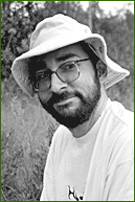 |
|
ON:
You published a revision of Habenaria ([A Review of Habenaria (Orchidaceae)
in Pabst and Dungs's Orchidaceae Brasilienses], in Lindleyana 17(2), 2002.
A very interest work which becomes more important if you think about the
lack of specialized literature. Could you talk a little about the development
and method of this work? |
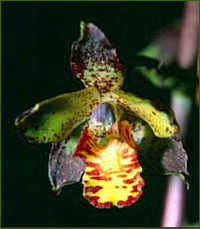 Cyrtopodium linearifolium |
ON:
You didn't limited to study this group, you also work with Cyrtopodium
and described two new species
Cyrtopodium latifolium and Cyrtopodium linearifolium. Those plants were already known or you not only brought them to the science but also to the knowledge of the public in general? |
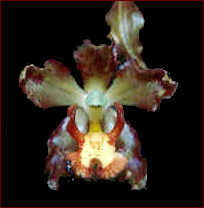 Cyrtopodium latifolium |
|
LUCIANO:
Cyrtopodium is one of the genera we work harder. Our region is
favorable to its occurrence and, inside the area of DF, there are, at
least, 18 species. It is natural that interested people, after a certain
time of study, accumulate pertinent information about the species regarding
to the environment, to the vegetative and reproductive parts, season of
blooming, etc. in such way that each species becomes very well characterized.
So, when we examine any material concerning the genus and, if the information we have in front of us doesn't coincide with the characterization pre-established, this fact becomes a good indicative that it is possible a “novelty”. However, it is not enough being a novelty for the person who is studying, it should be a novelty for the science for being described as a new species. For that reason, the work of a taxonomist should be, above of all thing, discerning. He should have a good knowledge of the genus as a whole and an update bibliography to do a good revision, before thinking in publishing a new species. There is many sources to detect“novelties”, between them: Orchid lovers associations, journey into the fields and the examination of the material deposit in herbarium. Many botanists and students in Botany have the habit of collecting every thing they come across, even though they don't identify correctly what they are collecting. In this way, many materials in herbarium represent new species which haven't been never described. |
|
In
1990, in one of our visits to the field, we saw, for the first time, Cyrtopodium
latifolium. Later, during a revision of bibliography and material
or herbarium, we noticed that the same species has been collected by Hoehne,
in Mato Grosso, in 1908. However, Hoehne mislead and identified as Cyrtopodium
vernum and didn't realize that it was a new species. In the same
way, in 1999, we saw for the first time Cyrtopodium linearifolium.
Later, we detected that that Irwin & Soderstrom have already collected
the same plant in 1964, in Jataí. Therefore, there is two examples
of plants that were, in a certain way, known by some people, but not for
the science.
JOÃO: Concerning Cyrtopodium, we are doing a description of new taxa and a revision of the genus. In collaboration with the Venezuelan researcher Gustavo Romero, present keeper of Oakes Ames |
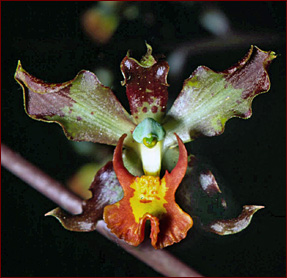 Cyrtopodium latifolium |
|
Orchid Herbarium, we prepared a “checklist” of the genus which
should be submitted for publication during the second semester of 2004.
Until now, we have already described the two mentioned species and some
more taxa which are being describing. According to our data, 28 taxa of
Cyrtopodium are known in Cerrado, 36 in Brazil and a total of 45 in the
genus, all of them restricted to the American continent. As Luciano said,
both Cyrtopodium latifolium and Cyrtopodium linearifolium
have already been collected by other collectors before us. However, in
both cases, the material were misidentified and confused with other species
already known which avoided, by that time, to be recognized as new species.
In the same way, Cyrtopodium fowliei, described in 1995, has been
collected for the first time between 1835 and 1839. Until we could verify,
all new species of Cyrtopodium described in the last years in Brazil
have already been collected before, it means, in none of the cases, the
type-material corresponds the first known collection of the species.
|
|
|
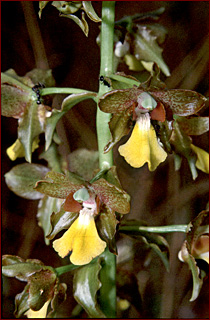 Cyrtopodium blanchetii |
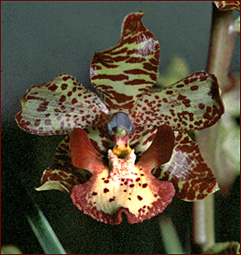 Cyrtopodium poecilum |
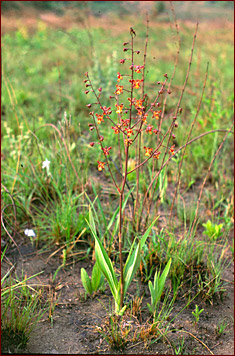 Cyrtopodium latifolium (habitat) |
ON:
Which is the characteristic of the habitat of the species you described?
LUCIANO: Cyrtopodium latifolium grows in campo sujo (dirt field), in deep soil and Cyrtopodium linearifolium grows in campo limpo (clean field), in rocky and shallow soil. |
|
ON:
For finishing, concerning new species, which are the news you can wait
for soon?
JOÃO: At least three species which photos are showed here: Habenaria pabstii, Bulbophyllum ciluliae and Cyrtopodium lamellaticallosum, which will be published until the end of year as they are already accepted by the specialized magazines. |
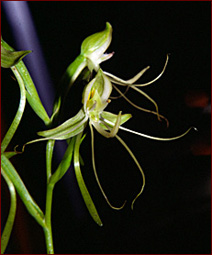 Habenaria pabstii |
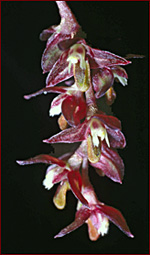 Bulbophyllum ciluliae-inflorescence |
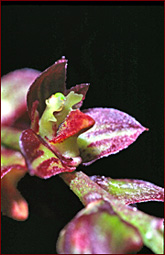 Bulbophyllum ciluliae-flower |
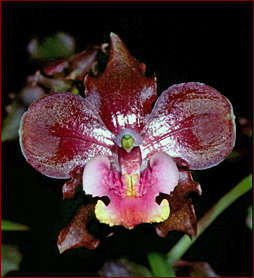 Cyrtopodium lamellaticallosum |
| Comments about the photos |
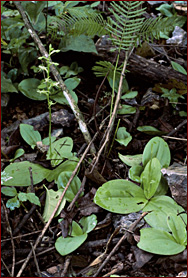 |
Habenaria
distans is known in Brazil by just 3 collections. The only one population known for this species in DF, showed in this picture, doesn't exist any more due to extraction of calcarious in the habit. |
 |
Bulbophyllum
celuliae New species in now being described. It occurs in the nuclear region of the biome cerrrado. Those are the first pictures showed for this species. |
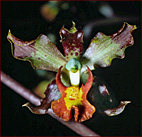 |
Cyrtopodium
latifolium |
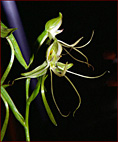 |
Habenaria
pabstii New species described at the end of the last here. This species is endemic to the nuclear region of the biome cerrado. The flowers are the biggest for the genus. |
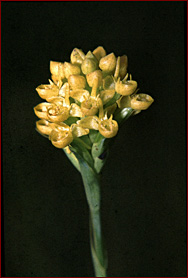 |
Habenaria
pungens This species differs from the great majority of the other species in the genus because the flowers are not resupinate. As far as we know, this is the first time the pictures of this species are showed for a bigger public. |
|
Cyrtopodium
linearifolium
|
 |
Notostheles
acianthiformis Terrestrial species extremely rare, known just for some collections done in the state of Minas Gerais, Goias and DF. This is possibly the first time the pictures of this species are showed for a bigger public. [Sinonyms: Pelexia acianthiformis Rchb. f. & Warm. and Stenorrhynchos acianthiformis (Rchb. f. & Warm.) Cogn.] |
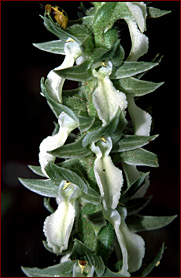 |
Lyroglossa
bradei Terrestrial species which grows in dry cerrados. The flowers are strong citric scented. As far as we know, it is the first time pictures of this species are showed for a bigger public. |
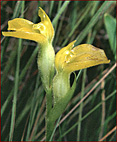 |
Sarcoglottis
uliginosa Terrestrial species of swamp areas and moist fields. |
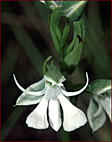 |
Habenaria
leucosantha Terrestrial species of swamp areas and moist fields. Sometimes, it appears in great number of specimens forming a flowered ensembles of rare beauty. |
 |
Habenaria
lavrensis Terrestrial species of dry fields. The name of this species pays hommage to Lavras city, where it has been collected for the first time. |
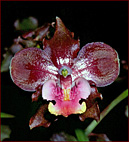 |
Cyrtopodium
lamellaticallosum New species which is being described now and disvovered through the examen of herborized material. It occurs in rupestrian fields in the central region of the state of Minas Gerais. This is the first pictureshowed of the species. |
| Photos: João A. N. Batista |
|
||